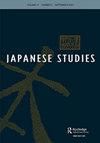Introduction to Special Issue on Writing-Restricted Variation in Japanese
IF 0.4
Q3 AREA STUDIES
引用次数: 0
Abstract
This special issue is a cross-disciplinary examination into the social concerns and motivations behind writing-restricted variation (that is, script, punctuation, emoji, and other features that are ‘lost’ if a text is read aloud) in contemporary written Japanese. By necessity, generalist introductions to written Japanese tend to describe its simultaneous use of multiple scripts as a complex but ultimately regular peculiarity. However, once we dive into the reality of contemporary written Japanese, it becomes clear that descriptions of Japanese writing norms as static rules are problematic. A quick trip to a local store is all that is required to encounter loan words like kōhī (coffee) or bīru (beer), normatively the exclusive domain of katakana, written in hiragana or kanji (Kunert, 2020; Robertson, 2021). Scanning billboards, shop names, manga dialogue, or television teroppu (‘sub-titles’) will similarly lead to encounters with wordplay employing formally ‘incorrect’ uses of kanji, or instances of native vocabulary written in katakana or the Roman alphabet (Maree, 2015; Robertson, 2017; Tranter, 2008). Even in ‘formal’ texts one can easily find common terms like isu (chair) or megane (glasses) written in distinct scripts across a single document (Joyce, Hodošček & Nishina, 2012), and attention to newer digital spaces will quickly bring about encounters with additional forms of writing-restricted variation like emoji (digital artefacts like ) and kaomoji (vertically oriented emoticons like (^_^) and . Indeed, as the articles in this special issue show, in contemporary Japan it is hard to read a novel, send a text message, play a video game, or even visit a shrine without seeing writing that contains contrasting, creative, or formally nonstandard ways of representing Japanese. Certainly, the study of writing-restricted variation in Japanese is not new. Research on variant script use dates back to the 1950s日语限定变体写作特刊简介
这期特刊是对当代日语书面语中书写限制变异(即大声朗读文本时“丢失”的脚本、标点、表情符号和其他特征)背后的社会关注和动机的跨学科研究。出于必要,通才对书面日语的介绍倾向于将其同时使用多种文字描述为一种复杂但最终有规律的特性。然而,一旦我们深入到当代书面日语的现实中,就会清楚地发现,将日语书写规范描述为静态规则是有问题的。只要去当地的商店逛一逛,就能遇到像kōhī(咖啡)或bubru(啤酒)这样的外来词,它们通常是片假名的专属领域,用平假名或汉字书写(Kunert, 2020;罗伯逊,2021)。扫描广告牌、商店名称、漫画对话或电视字幕(“副标题”)同样会导致遇到使用正式“错误”使用汉字的文字游戏,或用片假名或罗马字母书写的本地词汇实例(Maree, 2015;罗伯逊,2017;流动商贩,2008)。即使在“正式”文本中,人们也可以很容易地发现isu(椅子)或megane(眼镜)等常见术语在单个文档中以不同的文字书写(Joyce, Hodošček & Nishina, 2012),并且对较新的数字空间的关注将很快带来其他形式的书写限制变体,如emoji(数字人工制品)和kaomoji(垂直方向的表情符号,如(^_^)和。事实上,正如本期特刊的文章所显示的那样,在当代日本,阅读小说、发短信、玩电子游戏,甚至参拜神社,都很难不看到那些包含对比鲜明、富有创造性或形式上非标准的日语表达方式的文字。当然,对日语写作限制变异的研究并不新鲜。对变体文字使用的研究可以追溯到20世纪50年代
本文章由计算机程序翻译,如有差异,请以英文原文为准。
求助全文
约1分钟内获得全文
求助全文

 求助内容:
求助内容: 应助结果提醒方式:
应助结果提醒方式:


